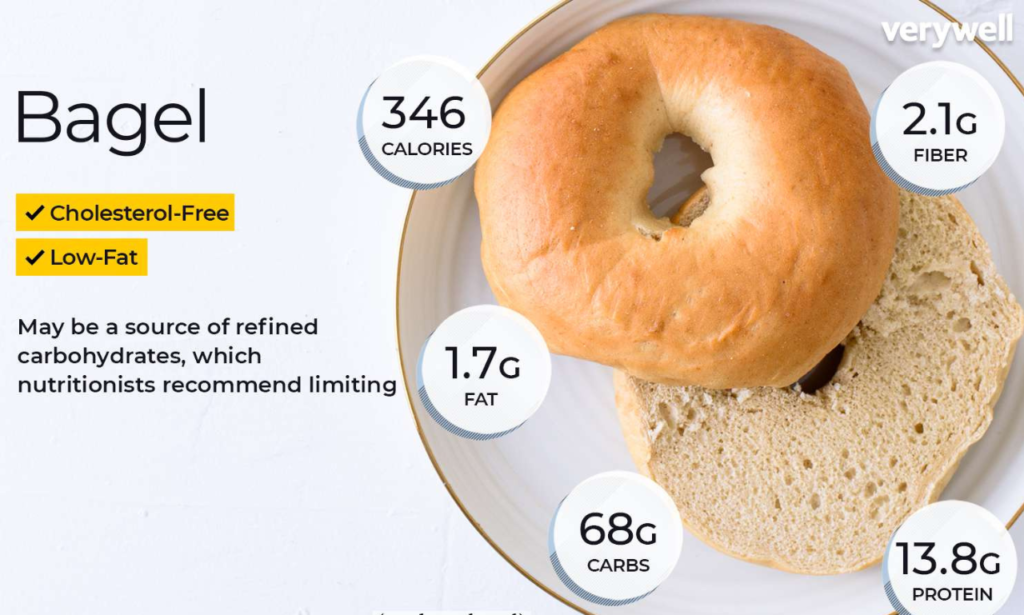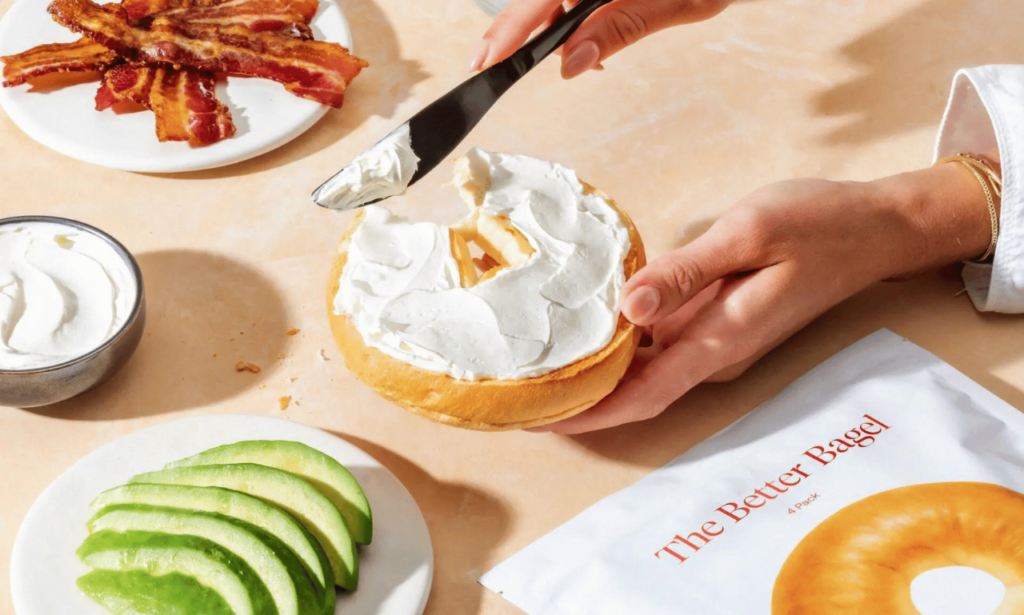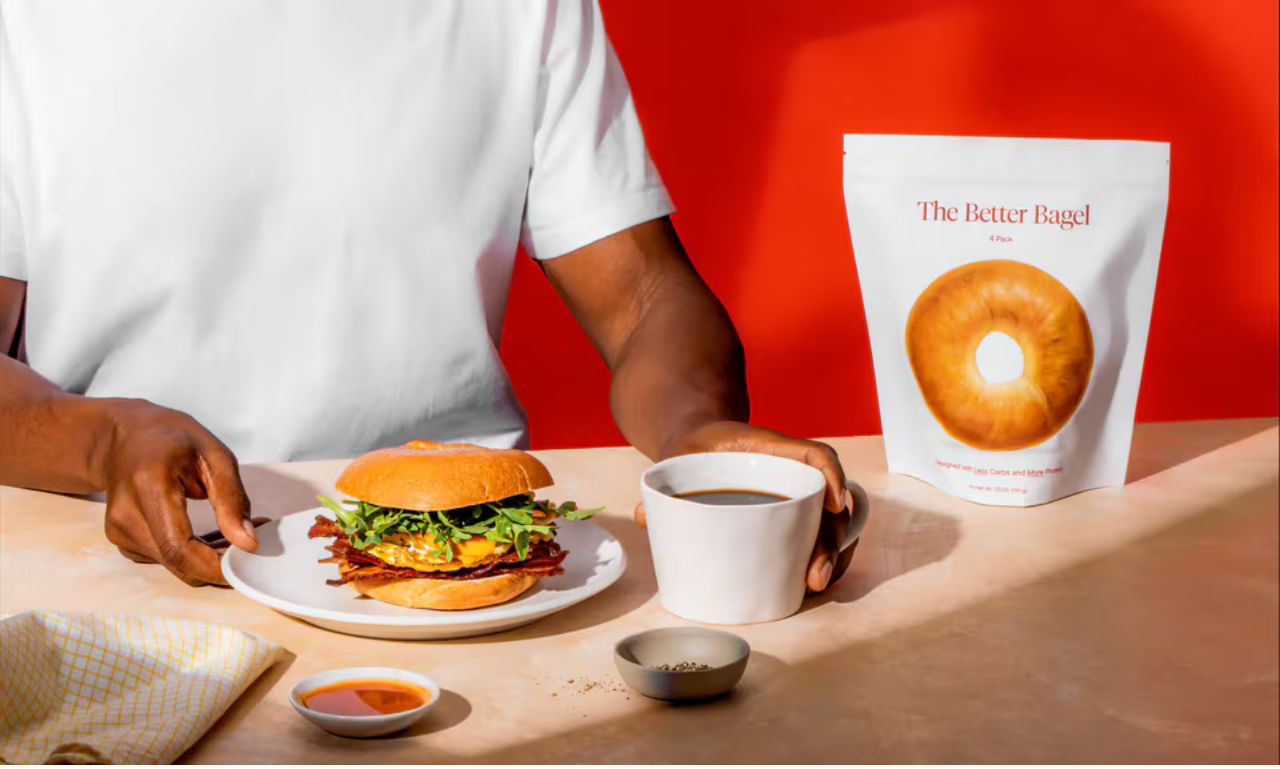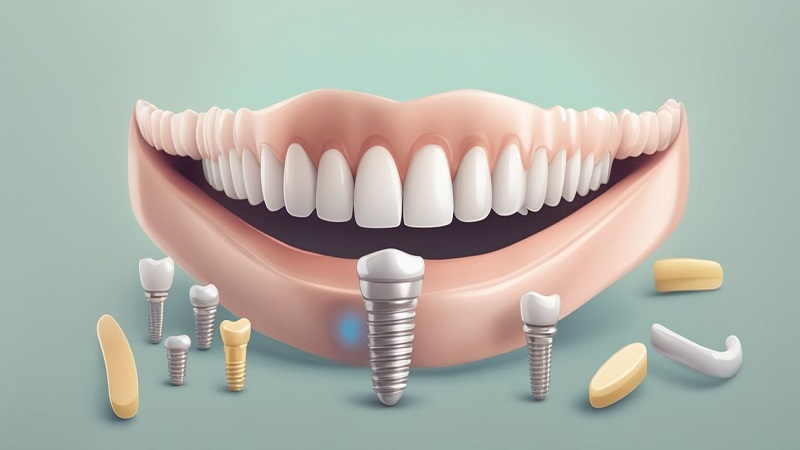Table of Contents
The Better Bagel: A Healthy Twist on a Classic Favorite
Bagels have been a breakfast staple for generations, but in recent years, people have started seeking healthier alternatives to the traditional version. Enter “the better bagel,” a new and improved take on the classic that not only satisfies your cravings but also provides a more nutritious option. In this blog post, we’ll explore what makes the better bagel stand out from the rest, its health benefits, how to incorporate it into your diet, and where you can find or make it yourself.
What is The Better Bagel?
At first glance, bagels seem like a simple food – dense, chewy, and often paired with cream cheese or butter. However, traditional bagels are made from refined flour and tend to be high in calories and carbs. In contrast, the better bagel is designed to be a healthier version without sacrificing flavor or texture.
The better bagel is typically made with alternative flours such as whole wheat, almond, or even gluten-free options, reducing its glycemic impact. It may also be packed with additional ingredients like seeds, nuts, and grains to boost its nutritional profile. Some versions are even higher in protein and fiber, offering a more balanced meal choice.
Health Benefits of the Better Bagel

The popularity of the better bagel has grown as people become more health-conscious, but what makes it truly better for you? Let’s break down some of the key benefits:
1. Higher Protein Content
Traditional bagels tend to be low in protein, which means they don’t provide the same level of satiety or muscle support as more protein-rich foods. The better bagel often includes added protein sources, such as chickpea flour, protein powders, or seeds, making it a more satisfying option. This extra protein can help you feel full for longer and aid in muscle repair, especially after workouts.
2. Lower Carbohydrates
One of the biggest concerns with traditional bagels is their high carbohydrate content, which can lead to spikes in blood sugar levels. The better bagel is usually made with alternative flours that are lower in carbs and higher in fiber. This helps slow down digestion and maintain steady blood sugar levels, making it a more suitable option for those watching their carb intake.
3. More Fiber
Fiber is essential for a healthy digestive system, and unfortunately, traditional bagels often lack this important nutrient. The better bagel, however, is usually loaded with fiber from whole grains, seeds, or other nutrient-rich ingredients. This increase in fiber can improve digestion, help manage weight, and reduce the risk of heart disease.
4. Reduced Sugar
Many store-bought bagels contain added sugars to enhance flavor and extend shelf life. The better bagel, especially those made at home or from specialized bakeries, often have little to no added sugars. Reducing your sugar intake is crucial for maintaining healthy blood sugar levels and preventing long-term health issues like diabetes and heart disease.
5. Gluten-Free and Other Dietary Considerations
For those with gluten sensitivities or allergies, traditional bagels can be off-limits. The better bagel offers gluten-free options made with alternative flours like almond or coconut, allowing people with dietary restrictions to enjoy this beloved food. Additionally, vegan versions are available that substitute traditional ingredients like eggs and dairy with plant-based alternatives.
How to Incorporate The Better Bagel into Your Diet

Eating healthy doesn’t have to be boring, and the better bagel can fit into your diet in various delicious ways. Whether you’re looking for a quick breakfast, a hearty lunch, or even a snack, there’s a better bagel option for you.
1. Breakfast Bagel Sandwich
Start your day with a breakfast sandwich using the better bagel as the base. Choose a high-protein variety and pair it with scrambled eggs, avocado, spinach, and a sprinkle of cheese. This combination offers a nutritious and filling meal that will keep you energized all morning long.
2. Bagel and Lox
For a more traditional but healthier take on the classic bagel and lox, opt for the better bagel topped with smoked salmon, cream cheese (or a plant-based alternative), red onions, and capers. The salmon provides a good dose of omega-3 fatty acids, which are essential for heart health.
3. Sweet Bagel Option
If you’re in the mood for something sweet, try a better bagel topped with almond butter, banana slices, and a drizzle of honey. This combination provides healthy fats, fiber, and a touch of natural sweetness without overwhelming your sugar intake.
4. Bagel Pizza
Who says you can’t enjoy pizza for lunch? Split a better bagel, add some marinara sauce, cheese, and your favorite veggies, and bake it in the oven until crispy. You’ll get a more balanced, lower-carb version of your favorite comfort food with the added nutrients of the better bagel base.
Making Your Own Better Bagel
While it’s becoming easier to find better bagels in stores or online, making them at home can be a fun and rewarding experience. Plus, you’ll have full control over the ingredients, allowing you to cater to your dietary preferences and needs.
Simple Recipe for The Better Bagel
Here’s a simple recipe for a whole wheat better bagel that you can make at home:
Ingredients:
- 2 cups whole wheat flour (or a mix of whole wheat and almond flour for extra protein)
- 1 tablespoon baking powder
- 1 cup plain Greek yogurt (or a dairy-free alternative)
- 1 tablespoon chia seeds or flaxseeds
- 1 teaspoon salt
- 1 tablespoon honey or agave syrup (optional for a touch of sweetness)
- Toppings: sesame seeds, poppy seeds, or everything seasoning
Instructions:
- Preheat your oven to 375°F (190°C) and line a baking sheet with parchment paper.
- In a large bowl, mix the flour, baking powder, salt, and seeds.
- Add the yogurt and honey, stirring until a dough forms.
- Transfer the dough onto a lightly floured surface and knead for about 5 minutes.
- Divide the dough into four equal parts and shape each piece into a bagel.
- Place the bagels on the baking sheet, brush with water or egg wash, and sprinkle your desired toppings.
- Bake for 25-30 minutes or until golden brown.
Once they’re done, you’ll have fresh, homemade better bagels that are nutritious, filling, and delicious!
Where to Find The Better Bagel
As the demand for healthier food options increases, so does the availability of better bagels. You can find them in health food stores, specialty bakeries, and even some major supermarkets. Additionally, several online retailers offer a wide selection of better bagels, including gluten-free and high-protein varieties.
If you’re short on time and prefer convenience, consider ordering from online platforms that specialize in delivering healthy food products. Brands focusing on clean, nutrient-dense ingredients often feature better bagels in their product lines, allowing you to enjoy them without the hassle of baking.
Conclusion
The better bagel is a fantastic option for anyone looking to enjoy a classic food with a healthier twist. Whether you’re seeking more protein, less sugar, or a gluten-free option, this new take on the traditional bagel has something to offer. By incorporating the better bagel into your meals, you can satisfy your cravings without compromising on nutrition. So, the next time you’re in the mood for a bagel, why not opt for the better version? Your body and taste buds will thank you!
Here are 10 FAQs related to the better bagel:
1. What is the better bagel?
The better bagel is a healthier alternative to traditional bagels, made with nutritious ingredients like whole wheat, almond flour, or gluten-free options, and often enriched with added protein and fiber.
2. How is the better bagel different from a regular bagel?
The better bagel typically has lower carbs, higher protein, and more fiber than regular bagels. It may also contain healthier ingredients like seeds, nuts, and alternative flours.
3. Is the better bagel gluten-free?
Some versions of the better bagel are gluten-free, made with almond flour, coconut flour, or other gluten-free alternatives, making it a great option for those with gluten sensitivities.
4. What are the health benefits of the better bagel?
The better bagel offers benefits like higher protein content, more fiber, lower carbs, and reduced sugar, which contribute to improved digestion, better blood sugar control, and longer-lasting fullness.
5. Can I make the better bagel at home?
Yes! You can easily make your own better bagel using healthier ingredients such as whole wheat or almond flour, Greek yogurt, and seeds, customizing it to your taste and dietary needs.
6. Where can I buy the better bagel?
The better bagel is available in health food stores, specialty bakeries, some major supermarkets, and online platforms that specialize in healthy, nutritious food products.
7. Is the better bagel suitable for a low-carb diet?
Yes, many better bagels are made with low-carb ingredients, such as almond or coconut flour, making them a suitable option for those following a low-carb or keto diet.
8. Can I eat the better bagel if I’m vegan?
Yes, there are vegan versions of the better bagel that use plant-based alternatives to ingredients like eggs and dairy, making them a great option for vegans.
9. What are some ways to enjoy the better bagel?
You can enjoy the better bagel with toppings like avocado, eggs, smoked salmon, almond butter, or as a base for a bagel pizza. It’s a versatile option for any meal.
10. Does the better bagel contain added sugars?
Most versions of the better bagel contain little to no added sugars, making it a healthier choice for those trying to reduce their sugar intake.






